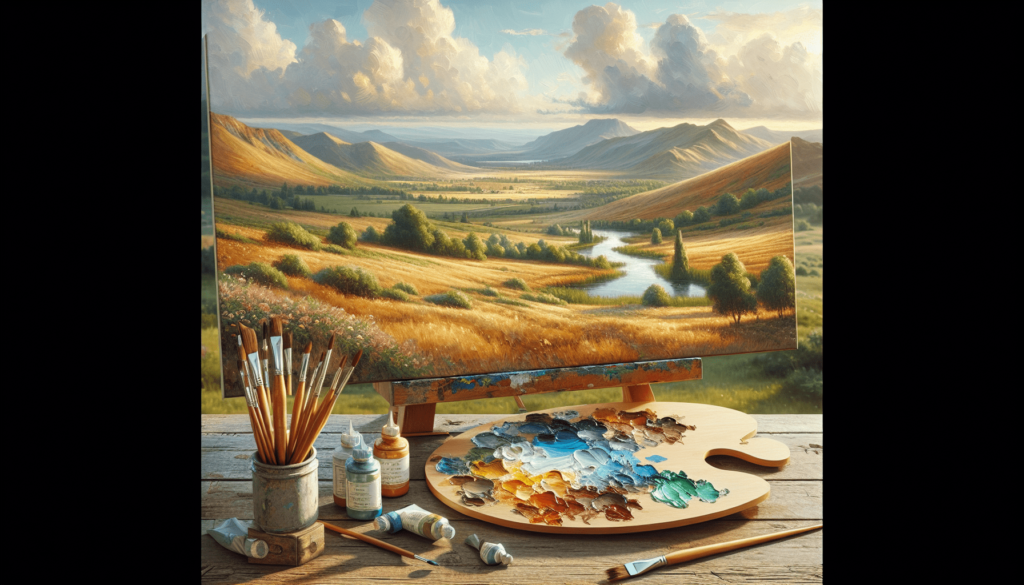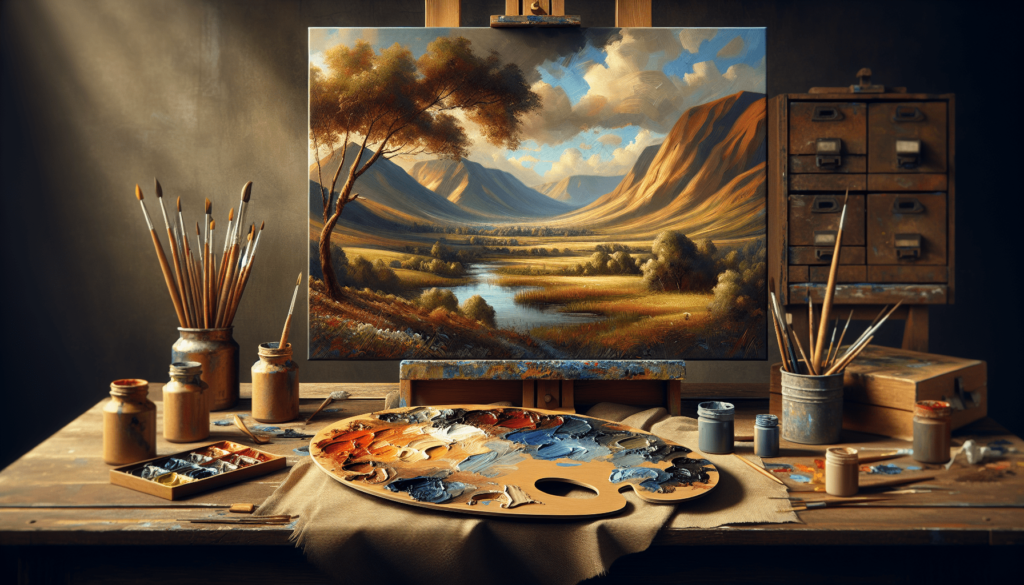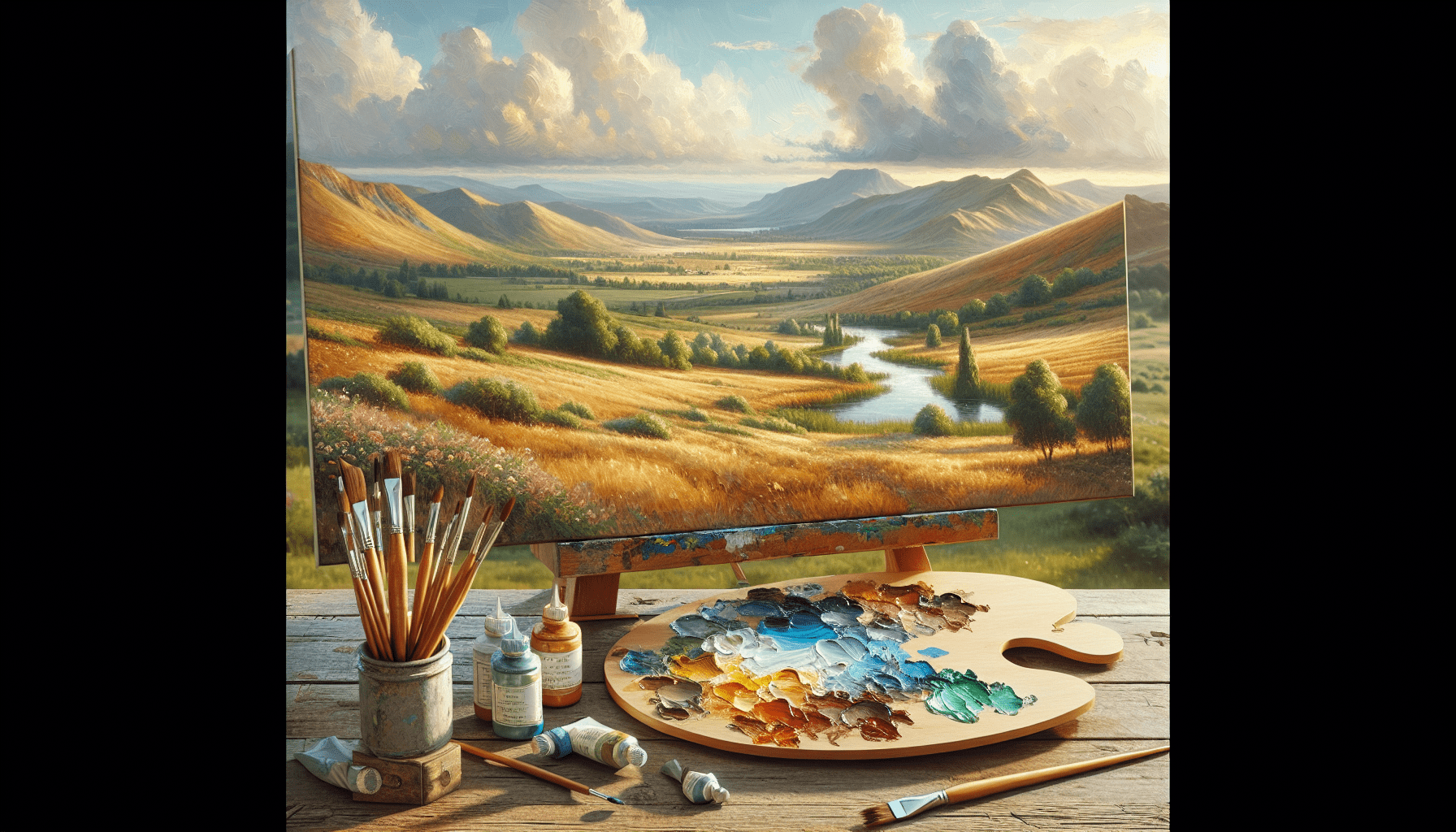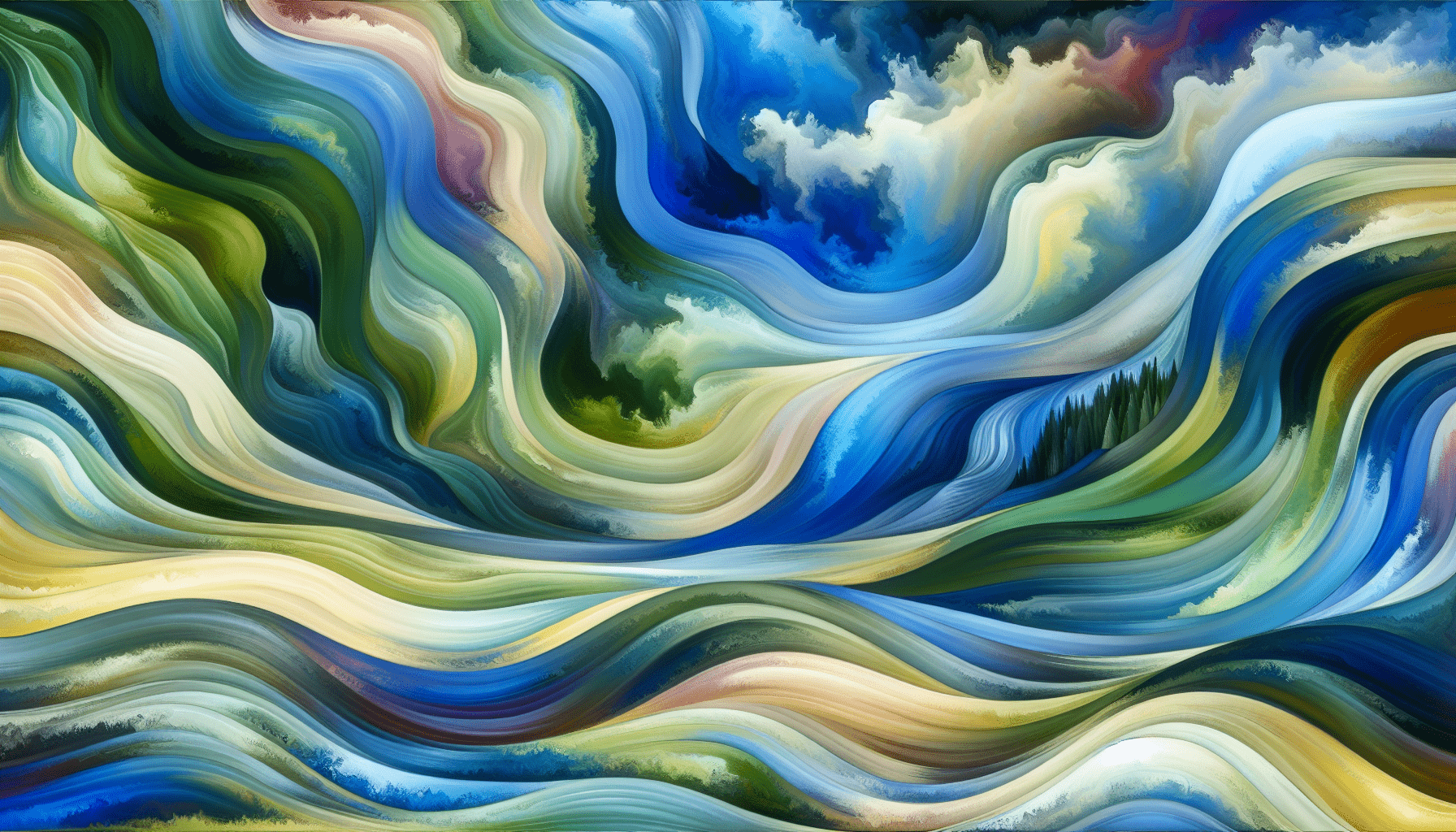Have you ever gazed upon a breathtaking landscape painting and wondered how you could create such beauty yourself? Painting landscapes with oil paints is a timeless art form that allows you to capture the complexity and grandeur of nature on canvas. The process, while rewarding, requires understanding, patience, and practice to master the skills necessary to bring a scene to life with depth, texture, and color.
Understanding Oil Paints
Before you begin painting a landscape, it’s crucial to understand the medium you will be working with. Oil paints, known for their vibrant colors and versatility, are composed of pigments suspended in oil. This medium allows for a slow drying time, enabling you to work on blending and correcting your painting over several sessions.
Characteristics of Oil Paints
Oil paints have unique characteristics that make them distinct from other mediums. They have a rich texture and can create effects ranging from subtle washes to heavy impasto. The slow drying time offers you the opportunity for extensive color blending and layer building, contributing to the depth and richness characteristic of oil paintings.
Why Choose Oil Paint for Landscapes?
The choice of oil paints for landscapes is often due to their ability to capture the realism and depth needed to portray nature convincingly. Their consistency allows for smooth transitions of color, which is ideal for replicating the soft gradients found in skies and waterscapes. Additionally, oil paints can produce strong contrasts and vibrant hues that bring the natural world’s dynamic lighting and atmosphere to life.
Materials Needed for Landscape Painting
Equipping yourself with the right materials is the first step toward achieving success in oil painting. While the list of potential supplies can be overwhelming, you can narrow it down to a few essential items to get started.
Brushes and Palette Knives
Choose brushes of various shapes and sizes to accommodate different painting techniques. Flat brushes are great for laying down large areas of color, while fine-tipped round brushes are perfect for detail work. A palette knife can be used both for mixing paint and adding texture to the canvas.
Paints
For starters, a basic set of colors will suffice, though expanding your palette over time with specific hues can add diversity to your work. Essential colors typically include Titanium White, Ultramarine Blue, Cadmium Yellow, Cadmium Red, Burnt Umber, and Sap Green.
Canvas or Surface
Selecting the right surface to paint on is crucial. Stretched canvas is the most popular choice due to its durability and texture, but hardboards or canvas boards can be suitable alternatives, especially for beginners.
Other Essential Tools
- Palette: For mixing paints.
- Easel: To hold your canvas at the right angle for painting.
- Solvents and Mediums: Used to dilute paint and alter its drying time or texture. Linseed oil is a common medium, while turpentine or mineral spirits can be used as solvents.
- Rags or Paper Towels: Essential for cleaning brushes and wiping away excess paint.

Preparing Your Workspace
Creating a productive workspace is essential for focus and creativity. Your area should be well-lit, ventilated, and organized to accommodate your materials and provide a comfortable environment conducive to painting.
Lighting Your Space
The right light can impact how you perceive colors. Natural light is ideal, though consistent artificial lighting can work just as well. Position your light source to mimic daylight, eliminating harsh shadows and providing uniform illumination.
Ventilating the Area
Proper ventilation is important due to the fumes that solvents and oil paints emit. Ensure air circulates well, either by working in a large room with open windows or by using an exhaust fan to mitigate fumes.
Organizing Materials
Keep your materials organized and within reach to streamline your workflow. Arranging your paints, brushes, and other tools methodically can save time and prevent frustration while allowing for an easier cleanup process.
Composing Your Landscape
Composition is fundamental to landscape painting. It sets the stage for your artwork’s visual flow and helps convey the scene’s emotional impact.
Choosing a Subject
Deciding on a subject can be daunting, yet it’s an integral part of bringing your vision to life. Whether you’re inspired by a photograph, plein air scene, or an imagined vista, ensure the subject speaks to you through its form, color, and composition.
Understanding Composition Principles
Understanding compositional principles like the rule of thirds, leading lines, and focal points can guide your landscape painting. These principles help balance the elements within your artwork, directing the viewer’s eye through the scene naturally.
Sketching Your Outline
A preliminary sketch on your canvas helps solidify your composition and map out where each element will reside. Use a light pencil or diluted paint to outline the major forms, ensuring that proportion and spacing align with your desired composition.

Creating a Color Palette
A well-thought-out color palette sets the tone for your painting. These colors should harmonize with one another to enhance the painting’s overall atmosphere.
Mixing Colors
Oil paints allow for infinite mixing possibilities. Understanding color theory and the color wheel can aid in mixing vibrant shades and harmonious tones. Practice creating different hues and tones on your palette to get a feel for your color range.
Using Value in Your Palette
Value refers to the lightness or darkness of a color. Incorporating varying values in your palette is essential for achieving depth and dimension in your landscape painting. Use a range, from light tints to dark shades, to convey form and volume.
Techniques for Painting Landscapes
Mastering oil paint techniques can help transform your landscape into a vivid and lifelike scene. Familiarity with these techniques builds the foundation of an effective landscape painting.
Underpainting
An underpainting serves as a base layer, establishing the composition’s value pattern before color is added. Using a monochromatic palette, this technique outlines the painting’s form and depth, providing a guide onto which color layers can be built.
Blocking In
Following the underpainting, blocking in involves applying the main colors and values across different sections of the painting. Focus on establishing the general color scheme while refining the shapes could wait until later stages.
Glazing
Glazing involves applying a thin, translucent layer of paint over a dry layer. This enhances color richness and depth without obscuring the underlying details, allowing you to manipulate tones and establish harmony intricately.
Impasto
Impasto adds texture and dimension, achieved by applying thick paint with either a brush or palette knife. This technique can capture the ruggedness of rocks or the movement of clouds, enhancing the painting’s tactile quality.
Finalizing Your Landscape Painting
As you approach the finishing stages of your painting, it’s important to evaluate and refine your work critically.
Refining Details
The final touches bring clarity and detail to your work. Focus on small touches that enhance textures, highlight focal areas, and define elements more clearly, all while making adjustments to maintain harmony and balance.
Evaluating Your Work
Step back from your painting to assess it from a distance. Does it convey the intended mood or setting? Are the colors and values correct? Assessing your work critically can provide insight into potential improvements and confirm successful elements.
Preserving and Varnishing
Once satisfied with your painting, consider preserving and varnishing it to protect the surface. Varnishing can enhance color vibrancy and protect against dust and UV damage. Ensure your painting has fully dried (which could take several months) before applying a varnish layer.
Overcoming Common Challenges
Every artist encounters obstacles, especially when mastering a medium as complex as oil painting. Recognizing common challenges and solutions can aid your development and perseverance.
Managing Drying Times
While oil paints’ prolonged drying time is beneficial, it can also be a challenge when working in layers. To manage drying times, plan your work in stages and use mediums that either accelerate or slow down drying as required.
Avoiding Muddy Colors
Muddy colors can occur when over-mixing or combining incompatible hues. To prevent this, clean brushes between color applications and refrain from applying too much paint until the previous layer has settled.
Keeping Motivated
Artists may face creative block or frustration when tackling new techniques. Remember that improvement comes with practice, and every painting is an opportunity to learn. Dedicate regular time to painting and celebrate progress, no matter how small.
Conclusion
Embarking on the journey of landscape painting with oil paints requires dedication, learning, and practice. By understanding the materials, mastering techniques, and developing your unique style, you can create paintings that resonate with emotion and beauty. May each stroke of your brush bring you closer to capturing nature’s magnificence on canvas, manifesting your artistic vision into an enduring work of art.



